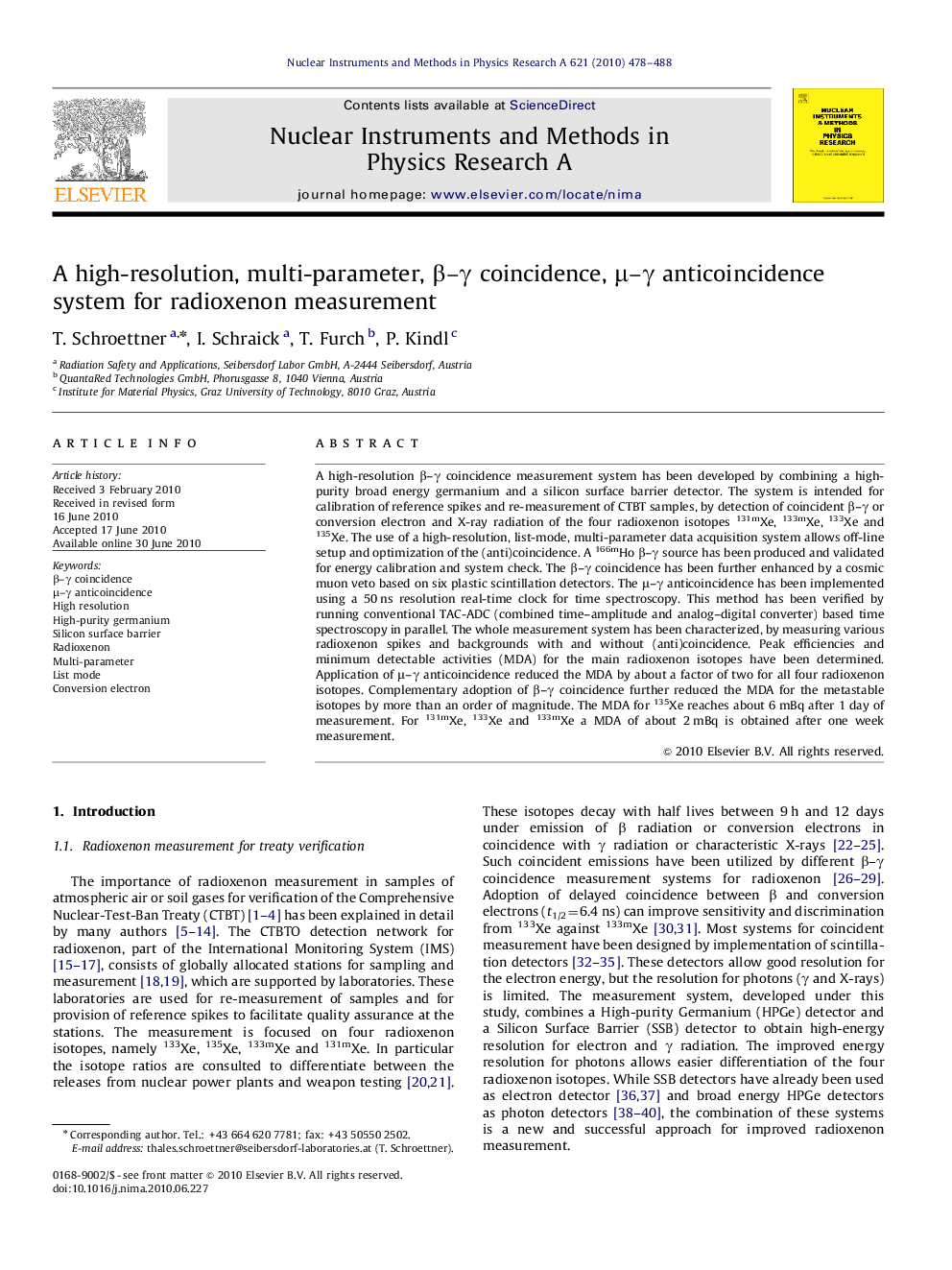| Article ID | Journal | Published Year | Pages | File Type |
|---|---|---|---|---|
| 1825856 | Nuclear Instruments and Methods in Physics Research Section A: Accelerators, Spectrometers, Detectors and Associated Equipment | 2010 | 11 Pages |
A high-resolution β–γ coincidence measurement system has been developed by combining a high-purity broad energy germanium and a silicon surface barrier detector. The system is intended for calibration of reference spikes and re-measurement of CTBT samples, by detection of coincident β–γ or conversion electron and X-ray radiation of the four radioxenon isotopes 131mXe, 133mXe, 133Xe and 135Xe. The use of a high-resolution, list-mode, multi-parameter data acquisition system allows off-line setup and optimization of the (anti)coincidence. A 166mHo β–γ source has been produced and validated for energy calibration and system check. The β–γ coincidence has been further enhanced by a cosmic muon veto based on six plastic scintillation detectors. The μ–γ anticoincidence has been implemented using a 50 ns resolution real-time clock for time spectroscopy. This method has been verified by running conventional TAC-ADC (combined time–amplitude and analog–digital converter) based time spectroscopy in parallel. The whole measurement system has been characterized, by measuring various radioxenon spikes and backgrounds with and without (anti)coincidence. Peak efficiencies and minimum detectable activities (MDA) for the main radioxenon isotopes have been determined. Application of μ–γ anticoincidence reduced the MDA by about a factor of two for all four radioxenon isotopes. Complementary adoption of β–γ coincidence further reduced the MDA for the metastable isotopes by more than an order of magnitude. The MDA for 135Xe reaches about 6 mBq after 1 day of measurement. For 131mXe, 133Xe and 133mXe a MDA of about 2 mBq is obtained after one week measurement.
